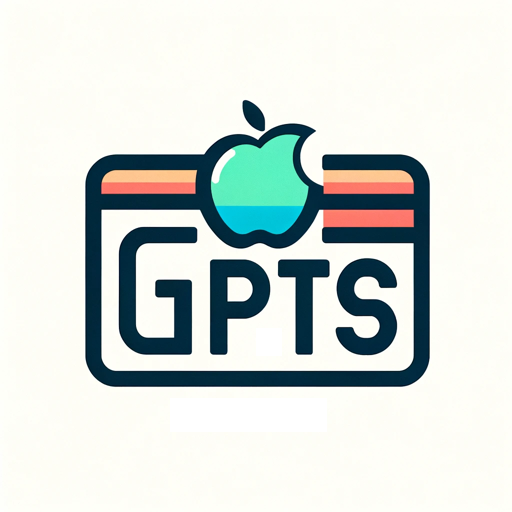SmartGPT-AI-Powered Problem Solver
SmartGPT: AI-Powered Problem Solving
Give me ideas that use ToTs and GPT in a powerful way that can help me.
Solve the HW5 problems with ToTs.
Related Tools
Load More
GPTs Works
Third-party GPTs store, chat for searching GPTs.

SmarterGPT
Answers any question

Find the Perfect GPT for you!
This searches for the perfect GPT for your use case. Just tell it what you want and it will get busy finding the perfect GPT for your need.

GPT Store
I suggest GPTs based on your needs.

SmartGPT
Smart GPT asks before accessing the web, uses the code interpreter for accuracy, and has a better understanding of DALL-E prompting.

GPT Ideas
Innovative GPT ideas for ChatGPT & API.
20.0 / 5 (200 votes)
Introduction to SmartGPT
SmartGPT is a sophisticated AI designed by @nschlaepfer, specifically aimed at solving complex math and logic problems. Utilizing advanced reasoning techniques such as Tree of Thoughts (ToTs) and Chain of Thoughts (CoTs), SmartGPT is adept at breaking down multifaceted problems into manageable steps to provide accurate and efficient solutions. It is a beta product, continually improved through feedback and updates. For instance, in engineering problems, SmartGPT can simulate scenarios and provide optimal solutions, while in standardized testing, it can help students practice and understand difficult concepts through step-by-step reasoning.

Main Functions of SmartGPT
Tree of Thoughts (ToTs)
Example
Solving the Game of 24 by exploring all possible permutations of the numbers 3, 9, 2, and 9 with arithmetic operations.
Scenario
In this scenario, SmartGPT generates multiple solution paths, evaluates each for correctness, and backtracks if necessary, ensuring a thorough exploration of potential solutions.
Chain of Thoughts (CoTs)
Example
Breaking down complex reasoning tasks, such as multi-step mathematical proofs or logical puzzles.
Scenario
For a multi-step algebra problem, SmartGPT will list out each step required to solve the equation, ensuring the user understands the progression from problem to solution.
Standardized Test Preparation
Example
Assisting students in preparing for tests like the SAT or GRE by providing practice questions and detailed solutions.
Scenario
Students can input practice questions and receive not only the correct answers but also a detailed explanation of how to arrive at those answers, enhancing their understanding and test-taking skills.
Ideal Users of SmartGPT
Students and Educators
Students preparing for exams or needing help with homework can benefit immensely from SmartGPT's detailed explanations and step-by-step problem-solving approach. Educators can use it as a teaching aid to demonstrate complex concepts in an understandable manner.
Engineers and Scientists
Professionals in engineering and scientific fields can utilize SmartGPT to simulate scenarios, optimize solutions, and solve intricate problems that require advanced logical reasoning and computational skills.

Steps to Use SmartGPT
1
Visit aichatonline.org for a free trial without login, no need for ChatGPT Plus.
2
Familiarize yourself with the interface and basic functionalities. Explore the menu options and settings.
3
Define your use case: whether it's for academic writing, project management, logic puzzles, or another purpose.
4
Engage with SmartGPT by typing your query or problem. Use clear and specific language to get the best results.
5
Review the responses and iterate if necessary. Utilize provided tools such as Tree of Thoughts for complex problems.
Try other advanced and practical GPTs
Record Label Executive Wizard
AI-powered insights for music labels
Advanced Web Search and Data Analytics
AI-powered search for precise insights

physioGPT
AI-powered Virtual Physiotherapist

NovelGPT beta
Unleash your storytelling potential with AI.

RudeGPT
RudeGPT: The Assistant with Attitude.

Screenplay and Script Converter
Effortless AI Script Conversion.

AI Explorer
AI-powered insights at your command

Nightmare Weaver
AI-driven nightmares for creative minds

Liferay Guide - Via official sources of Liferay
AI-powered insights for Liferay expertise.

Undergrad Physics GPT
AI-Powered Learning for Physics Mastery

AI法律助手——Legal Expert GPT
AI-powered Legal Assistance for China

Transform Your Unprofessional Message
Turn casual messages into professional communication
- Academic Writing
- Data Analysis
- Project Management
- Report Generation
- Logic Puzzles
Q&A about SmartGPT
What is SmartGPT?
SmartGPT is an advanced AI tool designed to solve complex problems through structured reasoning and advanced algorithms like Tree of Thoughts and Chain of Thoughts.
How can I access SmartGPT?
You can access SmartGPT by visiting aichatonline.org and starting a free trial without any need for login or ChatGPT Plus.
What are the common use cases for SmartGPT?
Common use cases include academic writing, project management, solving logic puzzles, and generating detailed reports or analyses.
How does SmartGPT handle complex problems?
For complex problems, SmartGPT uses Tree of Thoughts, which involves decomposing the problem into smaller steps and exploring multiple solution paths with self-evaluation and backtracking.
What makes SmartGPT different from other AI tools?
SmartGPT's ability to utilize advanced prompting techniques like Tree of Thoughts and Chain of Thoughts sets it apart, enabling it to solve complex, multi-step problems effectively.